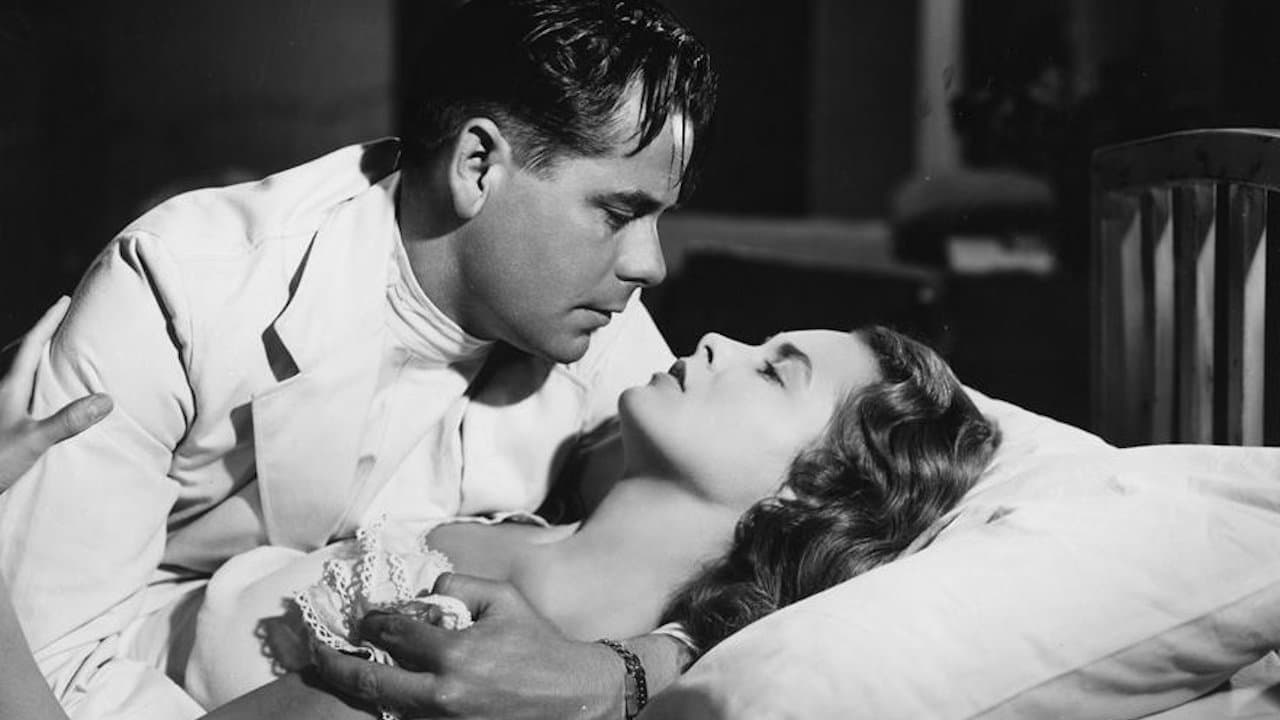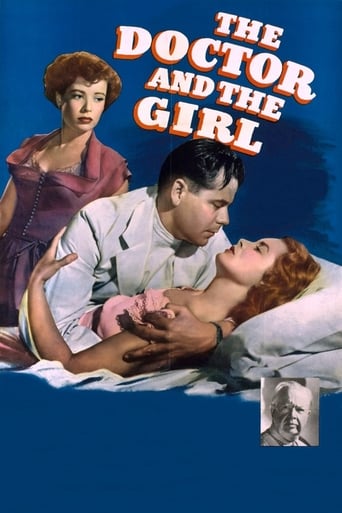

By the time the dramatic fireworks start popping off, each one feels earned.
... View MoreWhile it doesn't offer any answers, it both thrills and makes you think.
... View MoreExcellent and certainly provocative... If nothing else, the film is a real conversation starter.
... View MoreThe tone of this movie is interesting -- the stakes are both dramatic and high, but it's balanced with a lot of fun, tongue and cheek dialogue.
... View MoreOther reviewers of The Doctor and the Girl have rightfully praised its excellent treatment of a plot-line that at first glance seems familiar, even hackneyed. Of course, the sterling performances of everybody on screen are a huge asset to the picture. But for me, the gold medal has to be given to Curtis Bernhardt's expert handling of Theodore Reeves' adroit screenplay.It's a tightly-paced film, with very few exteriors. But Bernhardt's brilliant interiors give superb depth to each scene and each character, from stern Charles Coburn to sylphlike Janet Leigh to earnest Bruce Bennett (in a great supporting role as an unassuming ENT specialist). The director keeps everybody's performance low-key and believable. In her first scenes, sickly Janet Leigh seems to be wearing no makeup at all. And even Charles Coburn isn't allowed to milk his scenes to the limit.A master of lighting and camera angles, Bernhardt was one of the numerous excellent filmmakers in exile from Nazi Germany. His filmography is a strong one, studded with many entertaining films of the forties and fifties. Conflict, starring a quintessential Humphrey Bogart, and My Reputation with Barbara Stanwyck at her best, are two goodies that come to mind. And let's not forget Possessed, highlighted by Joan Crawford's hallucinatory performance.But unlike some other exiled directors - such as Wilder, Lubitsch, Lang and Sirk - Curtis Bernhardt hasn't got any universally acclaimed masterpieces on his résumé, so he is often neglected by movie historians. But he was certainly a talent to reckon with, and any of his pictures deserve a careful look.P.S. I totally concur with EliotTempleton's comments about Hollywood having a very long history of movies with medical themes. In fact Theodore Reeves, the main writer for this film, was the author of many medical screenplays dating back to the 1930s.
... View MoreI just wanted to say that the above reviewer is a bit misinformed regarding the history of films about physicians, particularly in the '30s. There was no shortage of movies with doctors as the central character in the early sound era, and some of them are "Men in White," "Internes Can't Take Money," "The Citadel," "Strange Interlude," "Symphony of Six Million," "Arrowsmith," "Yellow Jack," "Doctor X" "The Story of Louis Pasteur," just to name a few off the top of my head, without doing any research. Paramount's "Internes Can't Take Money," starring Barbara Stanwyck and Joel McCrea, was the first movie to feature the character of Dr. James Kildare, created by author Max Brand. I'm sure that the studio's executives rued the fact that they didn't have the foresight to feature the sympathetic young doctor in a series, which is what M-G-M did, starring Lew Ayres as the compassionate and crusading Dr. Jimmy Kildare. That series, by the way, started in the '30s with "Young Dr. Kildare" in 1938, followed by "Calling Dr. Kildare" and "The Secret of Dr. Kildare" in 1939. So, you see, there were quite a few doctors gracing movie screens throughout the 1930s.
... View MoreConsidering that Charles Coburn is a supporting actor in this film, it's not at all surprising that I watched "The Doctor and the Girl", as he's one of my favorite actors from Hollywood's golden age.Glenn Ford plays a brilliant young doctor--and the son of a brilliant and well-respected older doctor (Coburn). Ford really looks up to his father and wishes to be just like him--including having a VERY dispassionate outlook towards his patients. At first, those around the doctor at the hospital didn't like him--he was too emotionally disconnected from his patients' pain. But, through the course of the film, he has lots of reason to second-guess this approach....as well as other aspects of this domineering man he'd so long idolized.Overall, this is a decent little film. However, to me, the ending seemed pretty weak and difficult to believe. Still, it's a bit better than average and worth your time if you, too, are a Coburn-ite! Glenn Ford--overplayed his 'dispassionate' act
... View MoreDr. Michael Corday (played by Glenn Ford), only son of Dr. John Corday (Charles Coburn), has just graduated from medical school and returned home. His father, a prominent Manhattan physician, expects Michael to follow in his footsteps. Michael is annoyed at having to intern at an inner-city hospital and is rude and arrogant to his patients.Michael's two sisters, Mariette (played by Nancy Davis, who later became First Lady Nancy Reagan) and Fabienne (Gloria DeHaven), still live at home but are planning their futures. Mariette is engaged to marry a young pediatrician. Fabienne announces that she is moving to Greenwich Village to live on her own. The family is shocked, but Michael supports Fabienne's decision.Michael meets an attractive young woman named Taffy (played by Janet Leigh) at the hospital. He is arrogant with her, but she stands up to him and tells him to "remember that I'm a patient, doctor." He later apologizes and takes a personal interest in her case. Taffy requires surgery, and Michael uses his clout to obtain the services of a prominent physician. Meanwhile, his father has heard about Taffy, and disapproves because she is poor. Dr. Corday Sr. has Taffy discharged from the hospital before she is strong enough to leave, and warns Michael to stay away from her. But Michael defies his father and eventually marries Taffy, thereby cutting himself off from his family. Fabienne is on a path to self-destruction; her affair with a married man leads to tragedy; only Mariette remains the same calm, capable oldest child throughout the movie. Dr. Corday's attempts to control his adult children lead to arguments, estrangement, tragedy, and eventually a reuniting of the family.
... View More